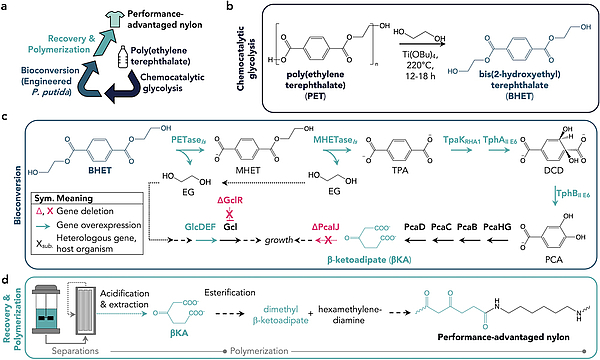From overflowing landfills to floating garbage islands in the oceans to microplastics in remote wilderness areas, billions of tons of discarded plastic have created a global pollution crisis.
Although plastics are essential to our everyday lives, they are durable materials that do not naturally biodegrade, taking decades or even centuries to decompose in landfills or the natural environment. More than 82 million metric tons of polyethylene terephthalate (PET) is produced globally each year to make single-use beverage bottles, packaging, clothing, and carpets, and it is one of the largest sources of plastic waste.
Scientists from the U.S. Department of Energy's (DOE's) National Renewable Energy Laboratory (NREL) are making progress on a possible solution to PET waste. A collaborative research team is combining chemistry and biology to turn PET into a nylon material with better properties that can be used to create a more versatile range of new products.
In conjunction with the Bio-Optimized Technologies to keep Thermoplastics out of Landfills and the Environment (BOTTLE) Consortium, NREL researchers and partners from Oak Ridge National Laboratory (ORNL) engineered a bacterium to convert deconstructed PET into building blocks for a superior nylon product. As described in "Tandem chemical deconstruction and biological upcycling of poly(ethylene terephthalate) to β-ketoadipic acid by Pseudomonas putida KT2440," recently published in Metabolic Engineering, these high-performance monomers can then be recycled into higher-value plastic materials and products, a process known as upcycling.
"This biological conversion step is one important part of the equation that makes PET upcycling possible, creating the opportunity to turn polluting plastic bottles into prized manufacturing materials, ultimately moving us closer to a circular economy at scale," said NREL scientist and journal article first author Allison Werner.
A circular economy can extend the functional lifespan of the molecules to make virgin plastics, while reducing waste, conserving resources, and boosting efficiency, bringing us one step closer to a manufacturing model that uses less raw material and energy and a consumption mindset that keeps plastic waste out of landfills.






